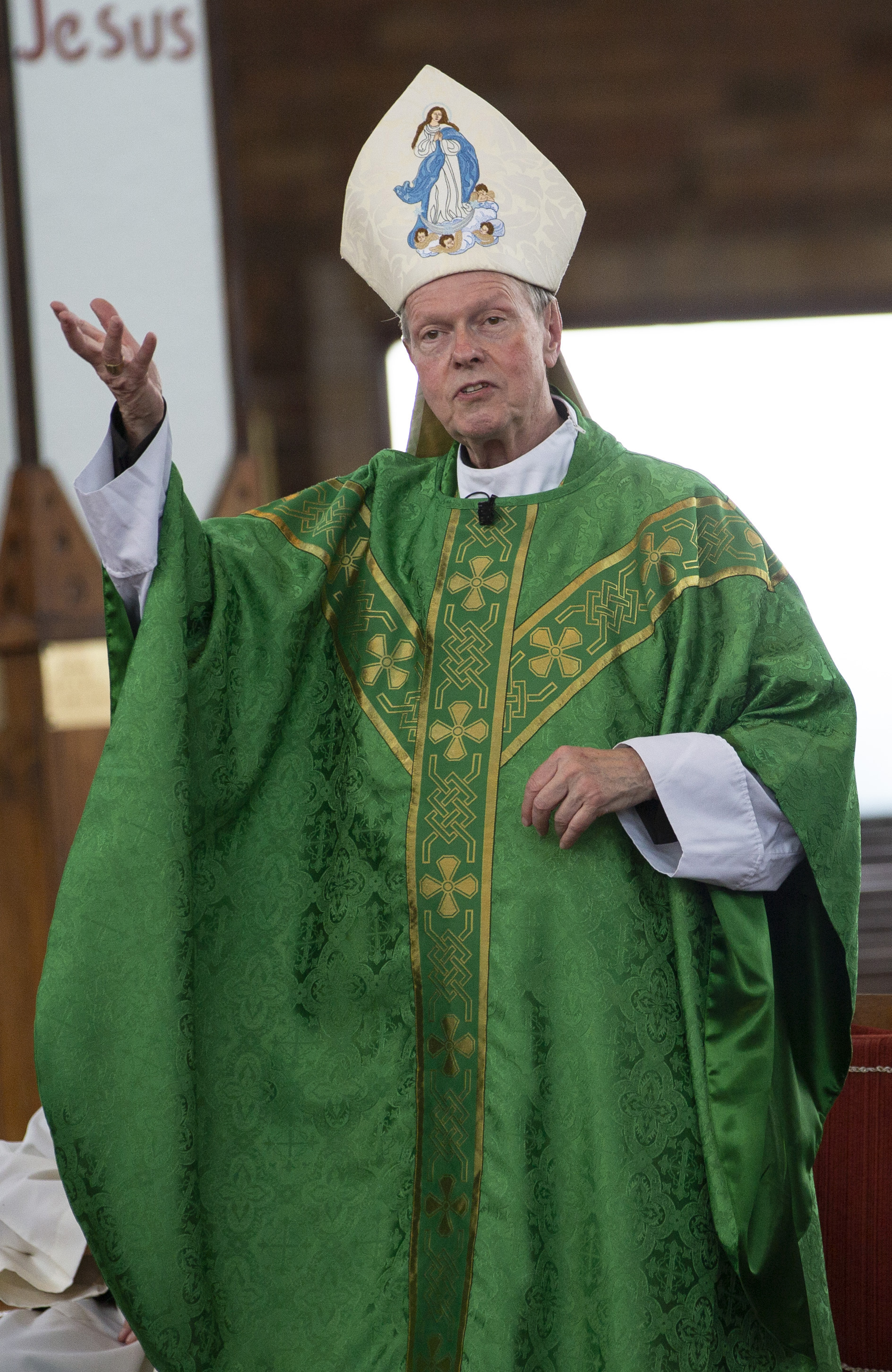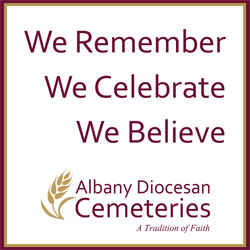April 6, 2018 at 1:53 p.m.
Catholic woman honored for early role in labor
She also was a parishioner of St. Mary's Church and later would be actively involved in the Woman's Christian Temperance Union and the Catholic Total Abstinence Union of America.
Last week, her legacy was memorialized with the unveiling of a bronze marker donated by the Governor's Commission on the Achievement of Women. Relatives of the crusader for women's rights joined local dignitaries and historians at the unveiling outside the Riverfront Center in Amsterdam.
Irish worker
Born in County Cork, Ireland, in 1849, Leonora was the only child of John and Honor Kearney. She and her family emigrated to the United States in 1852 and settled on a farm in St. Lawrence County.In the early 1860s, after her mother died, Leonora decided to become a schoolteacher. After teaching for six years, she married William Barry in Potsdam in 1871 and ended her career, since married women generally did not work outside the home.
The couple had three children: Marion Frances, William Standish and Charles Joseph. When their third child was born, the family was living in Amsterdam, a thriving city with numerous textile mills.
Sole support
When her husband died of lung disease in 1881 (and Marion Frances died four months later), Leonora was left to support two young children. She tried doing so in a mill, but the work caused too much strain on her eyes. She then took a position as an unskilled worker in a mill that produced hosiery and men's underwear. The experience set in motion her involvement in the labor movement and paved her way to leadership.Leonora earned 11 cents during her first day of work and 65 cents for her first six-day week. Workdays were 10 to 12 hours long, talking at work was frowned upon, lunch breaks were short, and employees risked being terminated or ostracized if they joined a union.
Amid such conditions, Leonora turned to the Knights of Labor, an organization embarking on its brief heyday. She joined an assembly of nearly 1,500 women and soon rose to leadership, first as master workman, or president, of her assembly; then in District Assembly 65, comprised of 52 locals with a membership of more than 9,200 workers.
Leadership
In 1886, Leonora was sent to the district convention in Albany and as one of the district's five delegates to the Knights' national convention in Richmond, Virginia.The women delegates, and then the entire assembly, elected Leonora as general investigator for the department of women's work. In that role, she traveled throughout the country, investigating conditions at factories, organizing new local unions and delivering hundreds of speeches.
During her first year, Leonora visited more than 30 cities and lectured more than 100 times.
Opposition
Leonora was scorned by factory owners, and many conservative union men did not support her work with women. Several priests also spoke out against her and the Knights of Labor, although it earned support from other parts of the Church. Upon learning that women to whom she had spoken during her factory tours had been subsequently fired, she discontinued her visits, focusing instead on organizing and educating women workers.In 1888, Leonora was given an office at the Knights of Labor general headquarters in Philadelphia and had her salary raised to $4 a day for six days per week, plus expenses. That same year, at a 40th anniversary celebration of the First Women's Rights Convention in Seneca Falls, Leonora shared a stage with another famous woman leader of her era: Susan B. Anthony.
As for her family, five-year-old Charles was living with his aunts in Potsdam, and William attended a convent boarding school in Philadelphia.
Seeking equity
Leonora's reports painted a vivid picture of the deplorable conditions in sweatshops and the prevalence of child labor. Unfortunately, she couldn't build a stable membership, not only because of apathy or reluctance among women workers, but also because of internal dissension within the Knights that soon led to its dissolution.Her most enduring contribution was the passage of the first Pennsylvania Factory Inspection Act of 1889; ironically, she had refused to lobby among members of the legislature because she believed such actions to be unladylike.
As the Knights of Labor lost its clout, so did Leonora. She married Obadiah Read Lake in 1890 and became an active figure in Catholic charity organizations, temperance work and the suffrage movement. The World's Columbian Exposition in Chicago in 1893 was the site of her lecture, "The Dignity of Labor"; later, she was a member of the Women's Christian Temperance Union and an officer of the Catholic Total Abstinence Union of America.
Leonora continued to speak in public until she was 78, when she developed cancer of the mouth. She lived the last 40 years of her life in Illinois and died there in 1930.
- Wisconsin priest arrested for alleged teen sex meetup attempt
- Amid Russian attacks, Ukraine’s religious leaders plead for Pope Leo’s help in returning abducted children
- USCCB synod tackles the dignity of work and the role of unions
- Archbishop Hebda prays for community’s peace, fortitude, consolation after school shooting
- Pope renews membership of Dicastery for Clergy
- Catholic aid workers help rebuild shattered West Bank economy amid war
- Live, act on faith; avoid ‘split’ personality, pope tells politicians
- Archbishop Hebda after Catholic school shooting: We ask for your prayers and action, rooted in hope
- Experts: Churches, schools must act on ‘unique vulnerability’ in their security
- Pope Leo joins US bishops in mourning victims of Catholic school shooting







Comments:
You must login to comment.